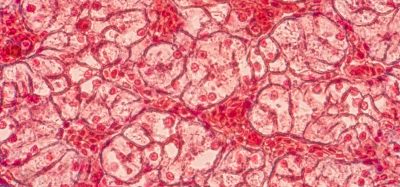Circular RNAs can regulate PKR activation in innate immunity
Posted: 2 May 2019 | Drug Target Review | No comments yet
A recent study has discovered that covalently closed circular RNAs (circRNAs) preferentially bind to PKR which is related to innate immunity and act as PKR inhibitors.


Produced by precursor mRNA back-splicing the exons of thousands of genes in eukaryotes, circRNAs are generally expressed at low levels and often exhibit cell-type-specific and tissue-specific patterns.
The recent study, from a team led by Dr Chen Lingling at the Shanghai Institute of Biochemistry and Cell Biology of the Chinese Academy of Sciences (CAS) and Dr Yang Li at the CAS-MPG Partner Institute for Computational Biology and published in Cell, discovered that most examined circRNAs tend to form 16-26bp intramolecularly imperfect RNA duplexes. It also discovered that circRNAs tend to bind to dsRNA-activated protein kinase (PKR) which is associated with innate immunity and act as PKR inhibitors.
The study (in collaboration with Dr Shen Nan at Shanghai Renji Hospital) also showed that dysregulation of circRNA expression and PKR activation is linked to the autoimmune disease, systemic lupus erythematosus (SLE).
As circRNAs are stable under normal conditions, the scientists sought to determine whether they could be degraded under certain types of cellular stress. They found that both poly (I:C) and encephalomyocarditis (EMCV) dsRNAs can trigger global circRNA degradation by activated RNase L upon viral infection.
Furthermore. although both circRNAs and linear RNAs are degraded by RNase L, earlier studies by Dr Chen’s lab showed that nascent circRNA production is rare. As a result, the number of new circRNAs produced from pre-mRNAs cannot overcome rapid degradation by RNase L within a short period after early innate immune responses. This results in a loss of circRNAs and the subsequent release of circRNA-associated PKR, thus allowing PKR activation.
PKR is directly activated by dsRNA and plays a central role in the cytoplasmic response to dsRNA. In order to learn how circRNAs bind to PKR and regulate its activation, the researchers optimised selective 2′-hydroxyl acylation analysed by primer extension and mutational profiling (SHAPE-MaP) assays. They covered most examined circRNAs tend to form 16-26bp imperfect RNA duplexes which can act as PKR inhibitors in cells. This shows that massive and rapid degradation of circRNAs by RNase L is required for PKR activation in the early stage of the innate immune response.
Further examination of SLE patient-derived cells showed reduced circRNA expression, spontaneous RNase L activation and increased PKR. It also showed that over-expression of circRNAs reduced the aberrant PKR activation cascade in SLE patient-derived cells.
Related topics
Research & Development, RNAs
Related conditions
Systemic Lupus Erythematosus
Related organisations
Chinese Academy of Sciences (CAS), Shanghai Renji Hospital
Related people
Dr Chen Lingling, Dr Shen Nan, Dr Yang Li








